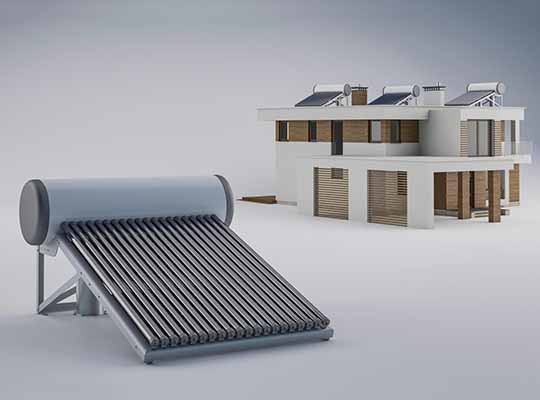In March 2019, the Government of India unveiled the India Cooling Action Plan (ICAP), a visionary 20-year initiative aimed at tackling the burgeoning cooling industry’s challenges. ICAP’s objectives are comprehensive, encompassing the reduction of refrigerant transitions, the control of cooling demand, the enhancement of energy efficiency, and the promotion of advanced technology adoption across sectors. As we delve into the current market dynamics, it becomes evident that India’s cooling demand is on the brink of significant expansion. Cooling is an essential cross-sectoral necessity, especially in areas such as building infrastructure, refrigeration, cold-chain logistics, and transportation.
Alarmingly, the International Energy Agency (IEA) underscores the issue, revealing that refrigeration and air conditioning (RAC) systems contribute a substantial 10 per cent of global CO2 emissions. Remarkably, India, despite its burgeoning population, ranks among the lowest globally in terms of access to cooling, exemplified by its per capita energy consumption for space cooling—merely 69 kWh, well below the world average of 272 kWh.
In a world grappling with escalating cooling demands and their environmental consequences, finding sustainable and energy-efficient solutions has become an urgent imperative. It is in this context that solar thermal cooling emerges as a promising technology—an innovative solution that not only meets the cooling needs but also harnesses the abundant energy of the sun in an eco-friendly manner.
The Brilliance of Solar Thermal Cooling

Solar thermal cooling is a remarkable innovation that utilizes solar energy to produce cooling effects. Unlike photovoltaic (PV) systems, which directly convert sunlight into electricity, solar thermal systems utilize sunlight to generate temperature differences, which can then be harnessed for cooling purposes. This technology is particularly relevant in regions blessed with high solar irradiance and substantial cooling requirements.
Understanding the Mechanics of Solar Thermal Cooling

Solar thermal cooling systems consist of three main components: solar collectors, an absorption chiller, and a cooling distribution system.
Solar Collectors: These are the heart and soul of the system, coming in various designs such as flat-plate collectors and concentrating collectors. Solar collectors absorb sunlight and convert it into heat, which is then transferred to a heat transfer fluid circulating through the collector’s pipes.
Absorption Chiller: The heat transfer fluid, enriched with solar-derived thermal energy from the collectors, is directed to the absorption chiller. This component comprises two vital cycles: the generator and the absorber. In the generator, heat vaporises a refrigerant, typically a mixture of water and ammonia, creating a high-pressure vapour. This vapour is subsequently absorbed by a weaker solution in the absorber, releasing heat and converting the vapour back into a liquid. This cooling effect is then distributed to provide chilled water for air conditioning or refrigeration.
Cooling Distribution System: The chilled water produced by the absorption chiller is distributed through a building’s HVAC system, offering cooling comfort and refrigeration for various applications.
The Changing Consumer Market
Within the dynamic landscape of the Indian consumer market, the air conditioning industry is experiencing rapid growth. This expansion is directly correlated with the rising middle-class population and the increasing number of residential and commercial structures. Transitioning this burgeoning market into an environmentally friendly one calls for a comprehensive overhaul—an undertaking that presents significant challenges.
Cooling Challenges
According to the World Health Organization’s projections, by 2050, over 255,000 people will succumb to extreme heatwaves annually. A startling statistic emerges: of the 2.8 billion people residing in the world’s hottest regions, a mere 8 per cent have access to air conditioning (AC) systems. It is imperative to recognize that providing comfort cooling is essential for numerous communities worldwide. However, the deployment of conventional entry-level AC units, which tend to be energy-intensive, poses one of the most significant end-use risks to our climate.
To put it into perspective, the direct and indirect emissions from room ACs could contribute to a potential 0.5-degree Celsius increase in global warming by 2100—a sobering realization.
Impact on Climate
This issue creates a cyclical conundrum where AC units impact both our health and the broader climate. While India currently accounts for only 5 percent of the global annual emissions from room ACs, predictions indicate that, within the corporate context, India could be responsible for over 25 percent of global annual emissions by 2050. This startling forecast is a direct consequence of the unprecedented surge in demand for comfort cooling, especially in the residential sector.
Solar Thermal Cooling: A Sustainable Solution
Solar thermal cooling stands as an environmentally sustainable and energy-efficient solution to the escalating demand for cooling worldwide. By harnessing the prodigious power of the sun, we can significantly curtail our carbon footprint, reduce energy expenses, and effectively cater to the burgeoning cooling requirements of our ever-advancing society. The ongoing advancements in technology and declining costs ensure that solar thermal cooling is poised to play a pivotal role in the global transition to cleaner and more efficient cooling solutions.
Conclusion: A Path to a Cooler, Greener Future
The intertwining challenges of cooling demand, environmental sustainability, and climate change require innovative solutions. Solar thermal cooling emerges as a compelling option, offering the prospect of harnessing the sun’s energy to meet our cooling needs while mitigating the adverse effects of conventional cooling technologies. As we navigate the intricate interplay between consumer demand, climate impact, and technological advancements, the adoption of solar thermal cooling could be a pivotal step towards a sustainable and cooler future for all. Embracing the sun as a bastion of cooling comfort represents a paramount stride toward a greener and more sustainable planet.











